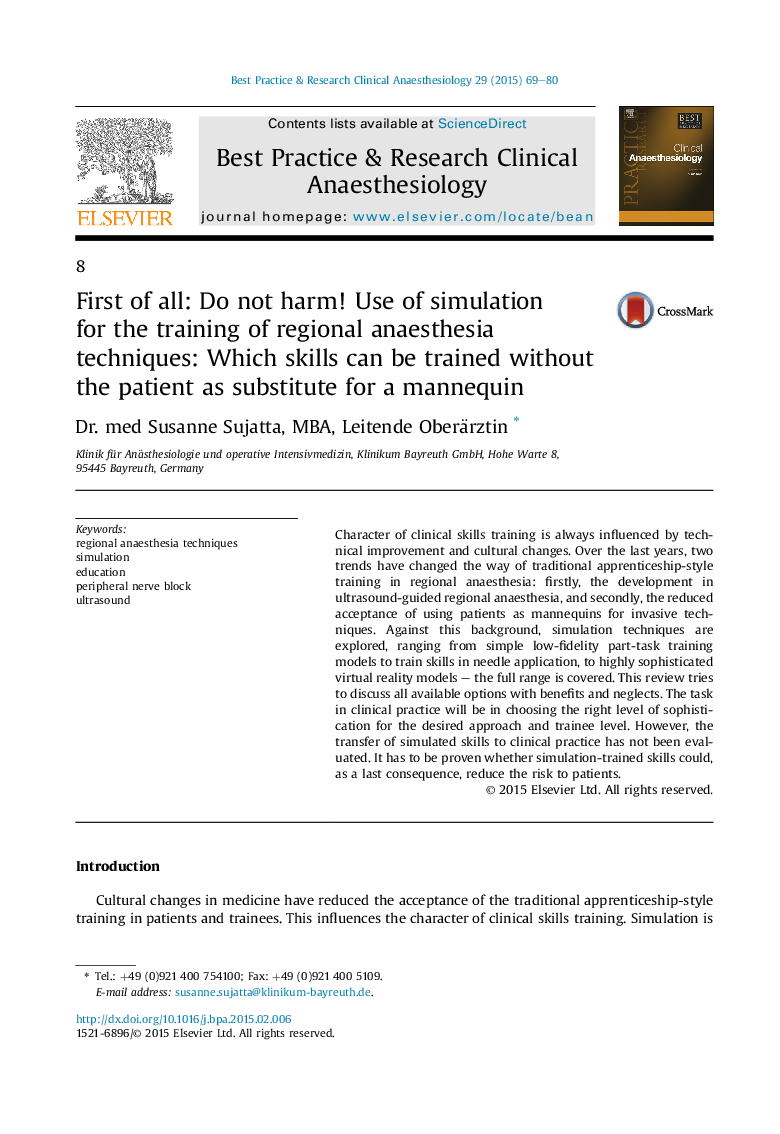| Article ID | Journal | Published Year | Pages | File Type |
|---|---|---|---|---|
| 2748453 | Best Practice & Research Clinical Anaesthesiology | 2015 | 12 Pages |
Character of clinical skills training is always influenced by technical improvement and cultural changes. Over the last years, two trends have changed the way of traditional apprenticeship-style training in regional anaesthesia: firstly, the development in ultrasound-guided regional anaesthesia, and secondly, the reduced acceptance of using patients as mannequins for invasive techniques. Against this background, simulation techniques are explored, ranging from simple low-fidelity part-task training models to train skills in needle application, to highly sophisticated virtual reality models – the full range is covered. This review tries to discuss all available options with benefits and neglects. The task in clinical practice will be in choosing the right level of sophistication for the desired approach and trainee level. However, the transfer of simulated skills to clinical practice has not been evaluated. It has to be proven whether simulation-trained skills could, as a last consequence, reduce the risk to patients.
